
In this mixed media lesson, we'll take a look at combining pen and ink applications with watercolor washes to create a fun and playful drawing of an octopus.
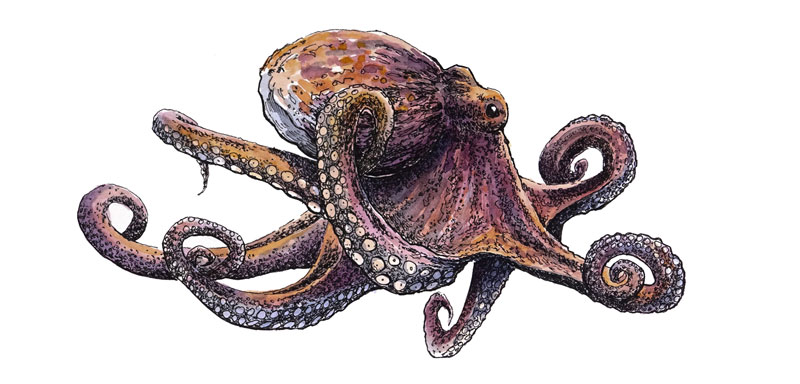
We exploit the best characteristics of each of the mediums to develop the value, texture, and color. The pen and ink applications are used to define the shape of the octopus before developing the texture and shading with loose, textural marks. Watercolor washes of simple colors are added after the ink applications have dried completely.
Mixing pen and ink applications with watercolor washes doesn't require a major investment in materials. The materials required are often inexpensive and readily available at every art store. The materials are also portable and easy to clean up.
Recommended Materials for This Tutorial
(Some of the following links are affiliate links which means we earn a small commission if you purchase at no additional cost to you.)
We'll begin with a loose and light graphite drawing of the octopus on hot press watercolor paper. This initial drawing is created mostly to define the shape of the subject. Details are purposely left out since these will be developed with the pen and ink.
Once the basic shape of the octopus is laid out with the graphite drawing, we can begin developing the value and texture with pen and ink applications. We'll approach this drawing by tackling each section of the octopus before moving on to the next. This approach will allow us to ensure some consistency in our applications and lead to a level of harmony and unity in the work.

We'll create the illusion of texture as we develop the range of value. Small, irregular marks are made with the pen to create the impression of the texture of the octopus. By placing these marks closer together, we can make the value darker. By allowing more space between these marks, we can make the values slightly lighter. Keep in mind that while the pen and ink applications will define the texture and value for the most part, our subsequent watercolor washes will affect this as well.
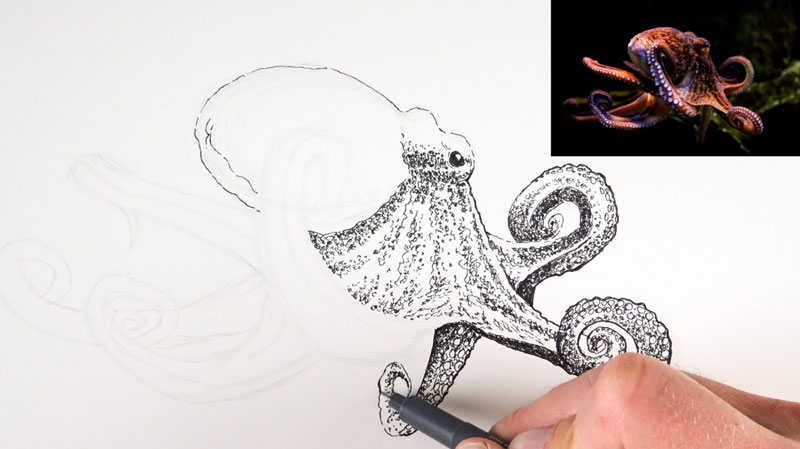
Since line is such an important factor with pen and ink drawing, we'll need to ensure that we use it to its fullest potential. By varying the thickness of the line, we can create the impression of form and even the illusion of a light source. For this reason, we'll make the line around the outer contours of the octopus a little thicker, especially underneath since our light source originates from above.
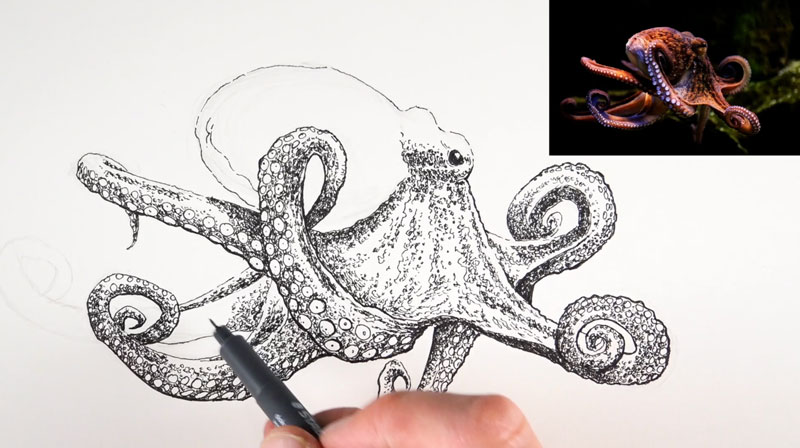
Once we have the majority of the octopus drawn with pen and ink, we can turn our attention to the head. The patterns here are slightly different than those found on the body, so the directional strokes used here are slightly different as well. Longer elliptical shapes are used that flow in the same direction as the form of the head. Underneath, we can concentrate these marks to create the impression of shadow before going back over the outer contour to enhance the line quality.
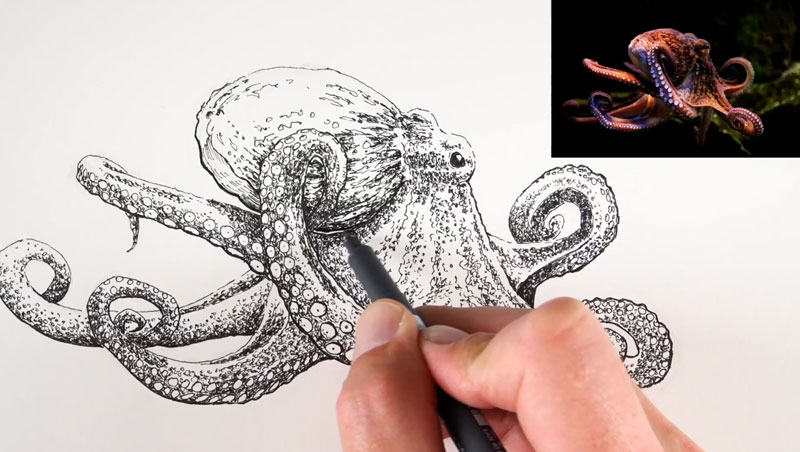
With our pen and ink drawing complete, we can begin adding watercolor washes to add a bit of color. Before doing so, we'll gently erase any remaining pencil marks with a kneaded eraser.
Watercolor is meant to be applied in layered washes. Each wash intensifies the color and may affect the value. We'll start with light washes and layer our applications to slowly build up the intensity and complexity of the color.
Since the line drawing is fairly complex, we'll simplify the colors that we use. We'll start with a light wash of purple, mixed by combining Alizarin Crimson and Ultramarine. We'll compliment this color with bits of orange, made by combining Cadmium Red Pale Hue with Cadmium Yellow.
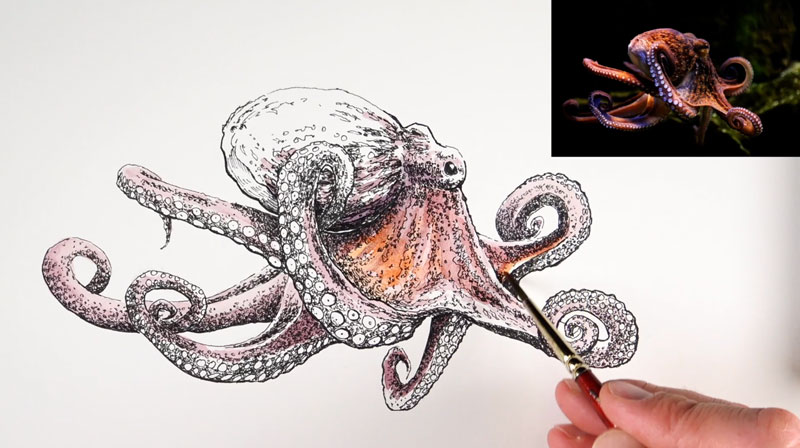
We can continue to layer these colors to gradually build up the intensity and the contrast. A bit of Prussian Blue is also used in shadowed areas. This "blue" shadow helps to contrast the oranges.
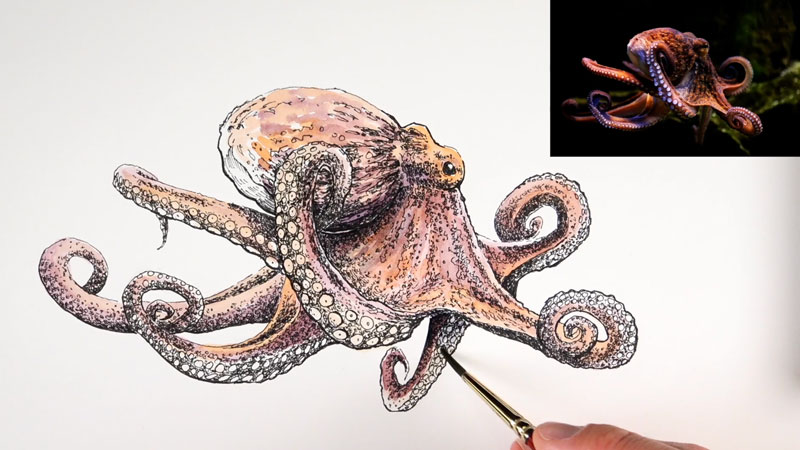
By starting with light washes of color, we have complete control over the color intensity and the value of the drawing. It may take several applications of color to build up the complexity and intensity of color that is required.

When complete, our pen and ink drawing is nicely complimented by the looser watercolor washes leaving us with a playful line and wash drawing of an octopus.
